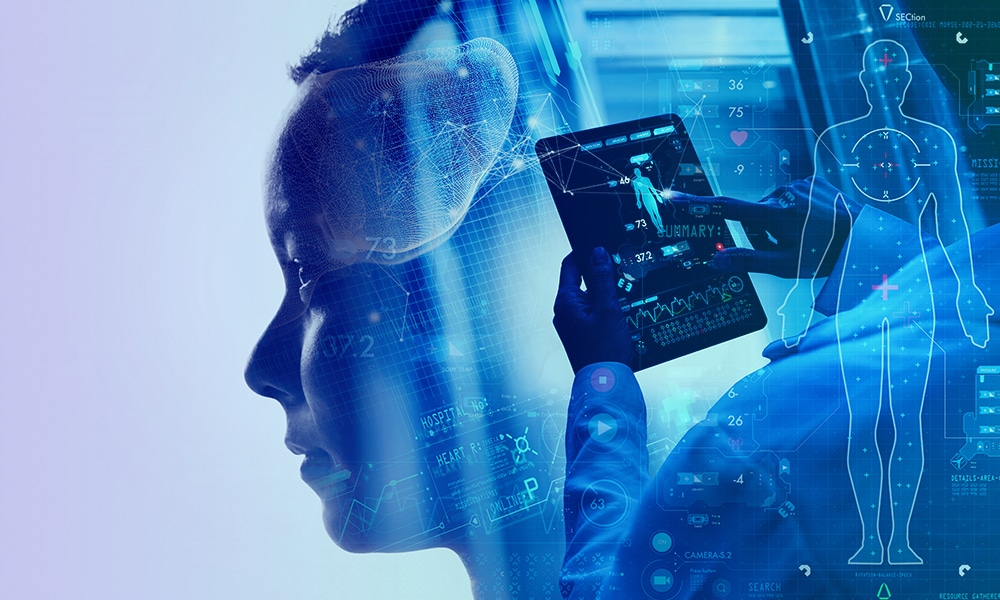Data-driven decision-making is the mantra for enterprise success and excellence today. From fintech and manufacturing to retail and supply chain, every industry is riding the big data wave and accomplishing stats-based decision-making with its advanced analytics models and algorithms. In the healthcare space, this becomes all the more rewarding and life-saving, serving as the bedrock of innovation and scientific advancements.
With such tremendous scope also come challenges. As the demand for healthcare data surges for diverse purposes, the chances of data breaches and misuse of sensitive information has been on the rise as well. A 2023 report reveals that over 133 million medical records and data were stolen, setting a new record for data breaches in healthcare.
The passing of the HIPAA regulation was a reassuring move in optimizing healthcare data privacy, which single-handedly and significantly reduced data breaches by 48%. Reports also reveal that 61% of all data breaches point to negligence from employees and professionals in this space.
To further curb such attacks and mass exposure of vulnerabilities arrives synthetic patient data. As they say,” Modern problems require modern solutions,” the onset of synthetic data healthcare enables healthcare professionals to fortify patient data and use AI models to assist them in generating fresh data.
In this article, we will dive deep into understanding what synthetic data generation is all about and its myriad aspects.
Synthetic Patient Data: What Is It?
Synthesis is the process of creating something new by combining existing elements. In the same context, synthetic patient data refers to artificially generated data from already existing real patient data.
In this process, statistical models and algorithms study mass volumes of patient data, observe patterns and characteristics, and generate datasets that emulate real data. Some of the common techniques deployed in generating artificial patient data include:
- Generative Adversarial Networks (GNNs)
- Statistical models
- Data anonymization methods and more
Synthetic data is an excellent and airtight technique to override privacy concerns relating to the chances of revealing patient information that is re-identifiable. To understand the benefits of such data, let’s look at some of the most prominent use cases.
Synthetic Data Use Cases

R&D Of New Drugs And Medications
Clinical trial data generation is discreet and organizations often conceal critical information. However, for research and development purposes, data interoperability is key to enabling breakthroughs. The generation of synthetic data can help researchers use this to hide vital pieces of re-traceable information and de-silo data to collaboratively study drug reactions and adversaries, formulations, correlations outcomes, and more.
Privacy & Regulatory Compliance
While there are conversations around the need for centralized cloud-based EHR systems, there are also regulatory challenges surrounding privacy and safety concerns. While data interoperability is inevitable, stakeholders across the healthcare spectrum need to be supremely vigilant about sharing patient data. Synthetic data can help conceal sensitive aspects while still retaining key touchpoints and serving as ideal representative datasets.
Bias Mitigation In Healthcare
In healthcare, the introduction of bias is innate and inevitable. For instance, if there’s an epidemic breakout in a geographical location affecting men aged between 35 and 50 years, bias is introduced by default for this specific persona. While women and kids are still vulnerable to this breakout, researchers need an objective ground to substantiate their findings. Synthetic data can help in eliminating bias and delivering balanced representations.
Scalable Healthcare Training Datasets
Due to regulations like GDPR, HIPAA, and more, the availability of datasets to train advanced healthcare-native machine learning models remains frugal. Artificial Intelligence (AI) systems and machine learning models require tremendous volumes of training data to consistently get better at delivering accurate results.
Synthetic data generation is a blessing in this space, allowing organizations to generate artificial data tailored to their volume requirements, specifications, and outcomes and simultaneously encourage ethical synthetic data use.
Shortcomings & Pitfalls Of Synthetic Healthcare Data
The fact that there are systems and modules in place to artificially generate patient and healthcare data from existing datasets is reassuring. However, this technique is not without its fair share of shortcomings. Let’s understand what they are.
There is no standard practice - or standardization techniques - to generate, share, and evaluate synthetic data. This makes collaboration and interoperability difficult.
At the far end of the spectrum, there exist equally powerful and sophisticated systems to reverse engineer synthetic data and expose real patient data.
There is no moderation or check in place to ensure the ethical use of synthetic data.
Despite being an autonomous process, there needs to be a human in the loop to ensure critical elements required for a task or research are captured by a model. For instance, if a model replaces sinus with migraine in a critical condition column, the entire research process pivots to a new direction.
Shaip And Its Role In Democratizing Healthcare Training Data
At Shaip, we not only revere the marvel of synthetic healthcare data but stay vigilant of its bottlenecks and unintended outcomes as well. That’s why our process of synthetic healthcare data generation takes a systematic and rigorous procedure to ensure scalable and reliable training datasets.
Our human-in-the-loop protocols and quality assurance interventions further ensure quality synthetic datasets for your project needs. The core value of synthetic data lies in fostering scientific advancements not at the expense of an individual’s privacy. Our vision is aligned to this philosophy and our procedures to delivering this.









